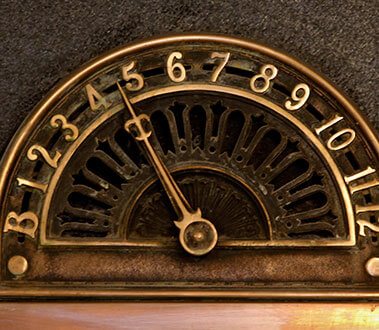General information about elevators
Elevator or lift is called every facility that is used for lifting people or loads.
Nowadays for the elevator that is used at multistorey buildings the French term ascenseur has prevailed. The idea of using such facilities begins very early.
The first reference to an elevator is in the works of the Roman architect Vitruvius, who mentioned that Archimedes (287 BC – 212BC), built the first elevator, probably in 236 BC.
In some literary sources from subsequent historical periods, elevators were mentioned as cabins with a hemp rope, which were moving manually or by animals. It is supposed that elevators of this kind were installed at Sina monastery in Egypt.
In 1000, The Book of Secrets of Ibn al-Khalaf Muradi in Islamic Spain, described the use of an elevator as a lifting device, so that a big ram to destroy a fortress. On the 17th century models of elevators were in the buildings of the palaces of England and France.
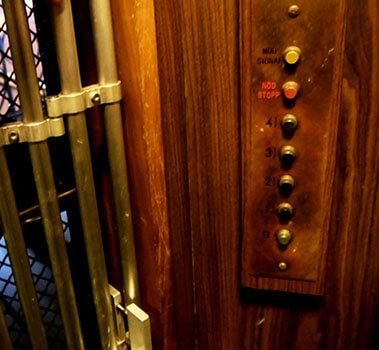
Ancient and medieval elevators used driving systems based on hoists or winding. The invention of a system based on gear movement, was perhaps the most important step in the technology of elevators since the ancient times, thus leading to the creation of modern passenger elevators. The first elevator with gear movement was constructed from Ivan Kulibin and placed at the winter palace of Russia in 1793. Several years later, another Kulibin elevator system was installed at Arkhangelskoye near Moscow. In 1823, an “ascending hall” made its debut in London.
Elisha Otis tabled a draft patent for an elevator on the 15th January 1861.
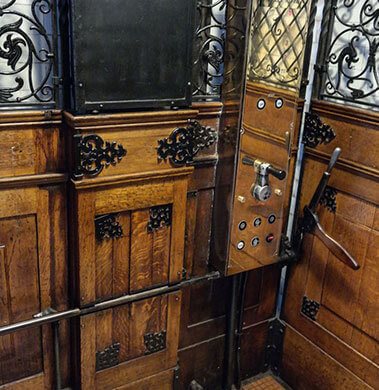
In the middle of 1800, there were many types of slow elevators that made commercial transports. Most of them had hydraulic lifting systems. The first hydraulic elevator, used a piston under the cabin to lift or lower the elevator. A pump was sending water pressure in an iron column within a vertical cylinder. The rise of the pressure caused the lift of the elevator. The elevator also used a counterweight system, so that the piston did not need to lift the total weight of the elevator and its load. However, the piston was not very practical for tall buildings, because it needed a very deep pit as the height of the building. Later, an elevator with rope and multiple pulleys was developed.
In 1850, Henry Waterman from New York was awarded for his invention that had to do with “constant control of the rope” of an elevator.
In 1852, Elisha Otis imported the safety elevator, which deterred the fall of the cabin if the rope broke. The design of the safety elevator Otis is somehow similar with an elevator type that continues to be used up to today. A device (grip) activates a toothed cylinder(s), which locks the elevator on its rails, in case that the elevator descends with extreme speed. He showed it at the New York exhibition at Crystal Palace in a dramatic presentation-defying death-in 1854.
On the 23rd of March 1857, the first passenger elevator Otis, was installed on Broadway street 488 in New York, at the big stores of Haughwont. It was steam engine, lifted at a five floor height in less than a minute and was an indisputable success.
The first elevator shaft was constructed 4 years before the first elevator. It was made for Peter Cooper, for the building of the Cooper Union institution in New York which started in 1853. An elevator shaft was included in the design, because Cooper was confident that a safe passenger elevator would soon be invented. The shaft was cylindrical because Cooper thought that it was a more effective planning. Later, Otis designed a special elevator for the building.
The first electric elevator was built from Werner von Siemens in 1880. Safety and speed of electric elevators were significantly reinforced from Frank Sprague. The inventor Anton Freissier developed von Siemens’ ideas and created a successful business at Austria-Hungary.
The development of elevators was led from the necessity to move raw materials, including carbon and timber from the hills.
The technology developed from these industries and the use of metal beams at buildings construction, contributed in the growth of both passenger and loads elevators that are used nowadays.
In 1874, J.W. Meaker got a patent diploma for a method which allows the doors of the elevator to open and close in safety.
U. S. Patent 147.853n 1882, when hydraulic power was an established technology, a company, that later was called London Hydraulic Power Company, was formed.
It created a high pressure network in both sides of Thames, which was finally expanded in nearly 184 miles and used approximately 8.000 machines, mostly elevators, as well as tow trucks.
In 1887, the American inventor Alexander Miles of Duluth, in Minnesota, registered with a patent diploma an elevator with automatic doors, which closed the elevator shaft.
In 1889, the electric motor was used for the first time. A this facility, in Demarest Mansion in New York, an electric motor gave motion to the winding drum at the basement of the building.
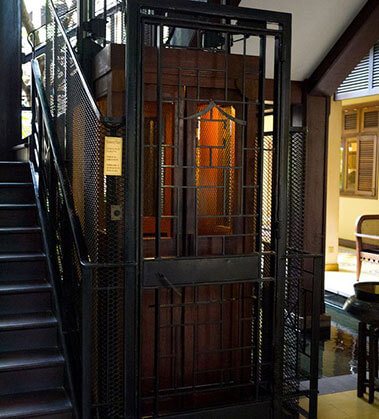
The entrance of electricity led into two more evolutions: in 1894 the controls with buttons were presented and in 1895 a lifting device was displayed, in which power was given in a grooved pulley at the top of the shaft. The weights of the cabin and counterweight were enough to ensure traction.
By abolishing the drawbacks of the winding drum, the motoring traction mechanism allowed the construction of higher shafts and the accomplishment of higher speeds. In 1904, gearless operation was achieved, with the immediate adjustment of the motoring pulley to the axis of the cursor of the electric motor and by this innovation, limitless speed was practically achieved.
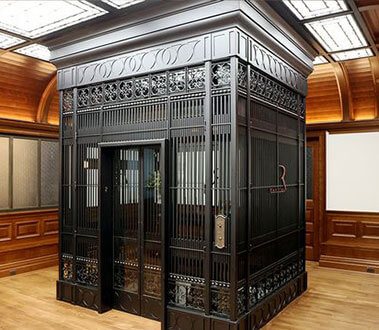
After resolving safety, speed and height problems, attention was focused to comfort and economy. In 1915, the so called automatic leveling was presented, in the form of automatic systems control in every floor that was taken over, since the operator stopped the manual use at some distance from the level of the floor, to lead the cabin at some specific parking point. Moreover, doors become electrically driven.
By the raise of the height of the buildings, elevator speeds increased up to 365 meters per minute at express facilities, like the ones destined for the last floors of the Empire State Building (1931) and reached up to 549 meters per minute at John Hancock Center Chicago in 1970 and 61 meters per minute at the building “Sunshine 60” (Aikebouckouro, Tokyo) in 1978.
Automatic function, that is widely spread in hospitals and blocks of flats, due to its cost, improved with the entrance of collective function, in which an elevator or a group of elevators answer the calls in terms, from the last to the first floor or the opposite.
The basic safety set up of all facilities of elevators, was the mutual dependence between the motoring mechanism and the doors of the shaft that completely blocked the departure of the cabin before the external door closed and secured.
Automatic systems of common control already functioned since 1950,that abolished the necessity of elevator operators.
An initial effort of reducing the loss of the floor surface in elevator facilities at tall buildings, was based on the idea of the two-floor elevator, which was first tested in 1932.
Each elevator consisted of two cabins, assembled to each other. These two cabins function as one unit, serving two floors in each stop. (In our country, this provision is forbidden from relevant regulations of the Ministry of Industry). Automatic two-floor elevators work since 1971 at Time-Life Mansion in Chicago and they have been adopted in many other buildings all over the world.
